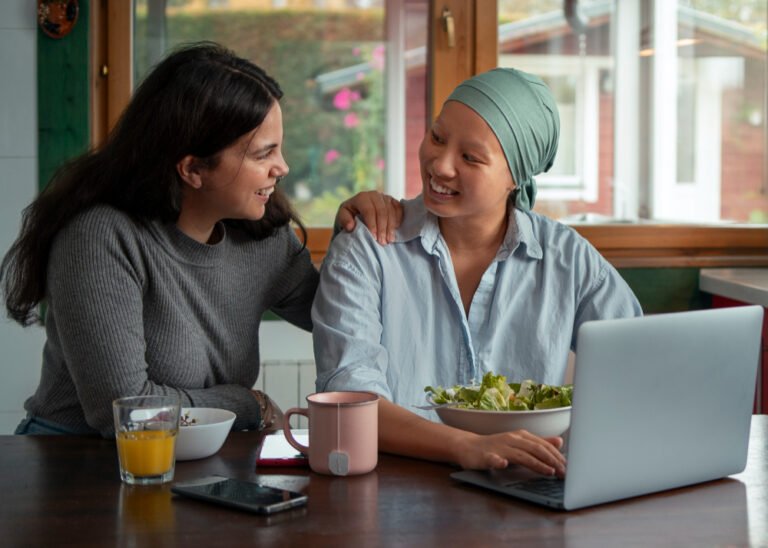7 Easy Steps to Giving Better Hugs as a Caregiver

I think some people just give great hugs. You know the kind: the ones that make you feel safe enough to cry when you need to. Those kinds of hugs don’t just comfort us. They help us feel seen and supported.
I’ve also met people who didn’t like hugs much at first. But over time, even they became more open to hugs and being close. That shows that hugs can be powerful, even healing.
As caregivers, giving a warm, safe hug can be a simple but powerful way to show someone you care. Here’s how to give hugs that really matter.
Why Hugs Matter
A good hug can lower stress, reduce anxiety and even help with feelings of sadness. Research shows that hugs lasting 20 seconds or more can trigger the release of oxytocin, often called the “love hormone” or “bonding chemical.” This helps people feel calm, cared for and connected. That’s something we all need, especially during tough times.
A study in Psychological Science found that people who received more hugs were less likely to get sick from stress-related illnesses.
Step 1: Ask first.
Before hugging someone, check their body language. Do they seem open to it? Are their arms reaching out? If you’re unsure, just ask them:
“Would you like a hug?”
This might feel a little awkward at first, but it shows respect and makes the other person feel safe. Some people — especially those who’ve experienced trauma — may not want to be touched. And that’s totally okay.
Step 2: Be genuine.
A hug only works if it feels real. Don’t rush in or do it just because you feel like you should. Make eye contact. Smile. Be calm. Let your body language show that you truly care.
Step 3: Hug in a comfortable way.
Hugs don’t need to be perfect, but comfort matters. A good method is the “diagonal hug”:
- One arm goes over their shoulder.
- The other arm goes under their opposite arm.

This feels more natural and gives a feeling of balance and safety. If the person is shorter, taller, or has mobility issues, adjust to what works best for them.
Step 4: Use the right pressure.
Hug too tight and it can feel overwhelming. Hug too loosely and it may seem like you don’t care. Try to give a soft but steady squeeze — just enough to say, “I’m here with you.”
Step 5: Be present in the moment.
When you’re hugging someone, really be there. Don’t check your phone, look around or pat their back too much. Take a deep breath and let the hug speak for itself. This moment of connection is more powerful when you’re focused and calm.
Step 6: Keep it going, but not too long.
About 20 seconds is the sweet spot. That’s how long it takes for oxytocin to kick in. But always pay attention to the other person’s comfort. If they start to pull away, don’t force the hug to go longer.
Step 7: End the hug with kindness.
Let go slowly. Give a warm smile. Maybe say a kind word like, “You’ve got this,” or “I’m here for you.”
Little actions like these can help the other person feel even more supported.
Final Thoughts on Better Caregiver Hugs
On the surface, hugs might seem like a small thing. But for caregivers, they can be one of the most loving tools you have. They don’t take much time, but the impact can be huge for both you and the person you’re caring for.
It’s true: not all hugs are created equal. A meaningful embrace combines awareness, technique and empathy.
These seven steps can help you master the art of the caregiver hug. Just keep making each one safe, sincere and soothing.







